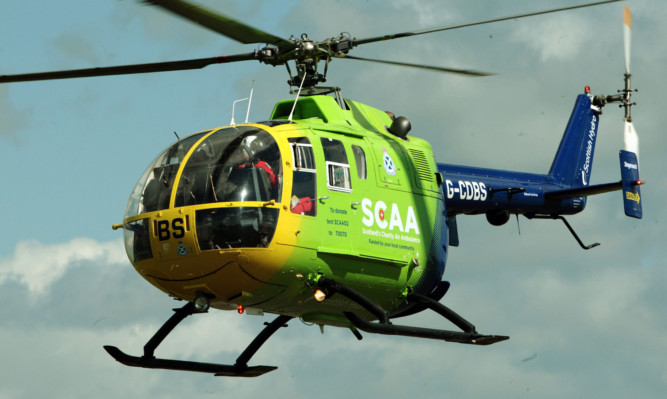Scotland’s only charity-funded air ambulance service scored a massive £3.3 million boost in the Budget.
UK Chancellor George Osborne revealed the windfall will be used to replace the Perth-based mercy crew’s helicopter.
The money comes from financial penalties imposed on banks involved in last year’s Libor scandal, when they were caught rigging interest rates.
Scotland’s Charity Air Ambulance (SCAA) chairman John Bullough said the announcement was “fabulous news”.
He said: “Since we launched in May 2013, SCAA has responded to over 500 time-critical emergencies across the country.
“We have saved many lives and improved many hundreds more.
“We have achieved all this with our distinctive Bolkow 105 aircraft an elderly, yet dependable airframe widely used as an entry-level air ambulance helicopter.
“This has proved an invaluable workhorse during our first two years. However, it has some limitations.”
Mr Bullough added: “The new funding will enable us to upgrade our helicopter to a more modern, spacious, powerful and all-round more capable aircraft that could increase our operational capacity by over 50%.
“It is extremely heartening to see this level of support coming to us through Libor.”
SCAA receives no government funding and is supported solely by the public, trusts, companies and foundations whose fund-raising efforts keep the service in the air.
While the £3.3m will pay for a helicopter upgrade, the SCAA will still have to find money to meet its overall running costs, which are likely to increase with the introduction of a new aircraft.
The new chopper will allow SCAA to fly at night and in cloud, as well as increase the current craft’s range, endurance and payload.
It will also offer a larger cabin, which would allow a family member or physician to fly with the patient, and it would accommodate a broader range of patients.
Liz Smith, Scottish Conservative MSP for Mid Scotland and Fife, said: “This is an excellent Budget for one of our best local services. Since its launch in 2013, SCAA has made over 500 journeys to assist emergencies on our roads, waterways and mountains and its ability to reach 90% of Scotland’s land mass within 25 minutes makes it a vital means of saving lives.”
